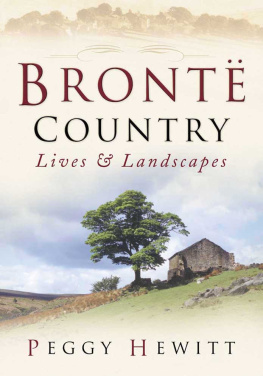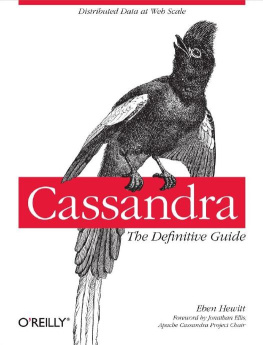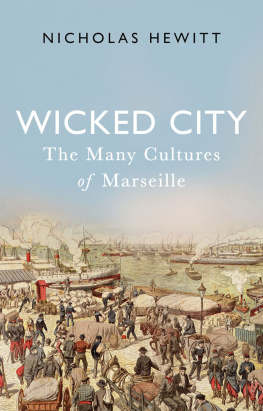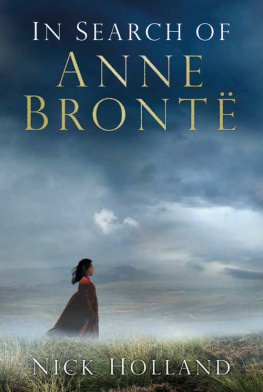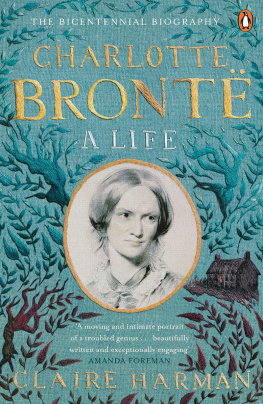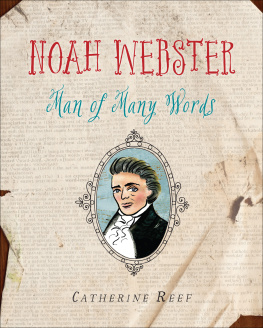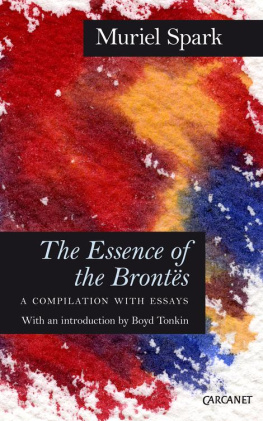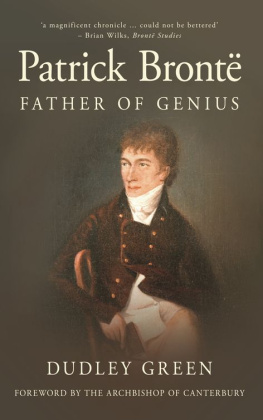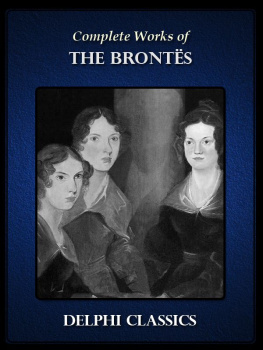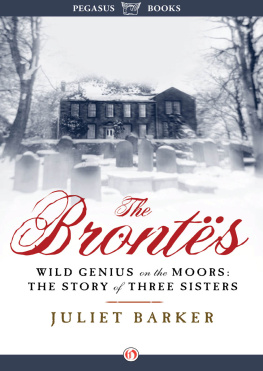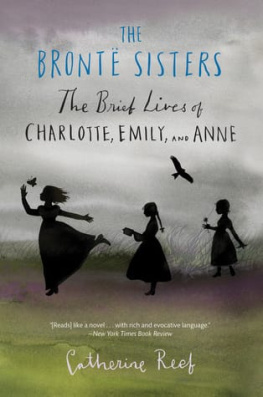BRONT
COUNTRY

Upper Ponden and the heights of Oakworth Moor seen from Delph Hill near the Alcomden Stones a vast sweep of the Bront Moors.
BRONT
COUNTRY
Lives & Landscapes
PEGGY HEWITT
Foreword by Juliet Barker
with Photographs by Simon Warner

First published in 1985 under the title These Lonely Mountains by Springfield Books Ltd
This revised edition first published in 2004 by Sutton Publishing Limited
The History Press
The Mill, Brimscombe Port
Stroud, Gloucestershire, GL5 2QG
www.thehistorypress.co.uk
This ebook edition first published in 2013
All rights reserved
Copyright Peggy Hewitt, 1985, 2004, 2013
Foreword Juliet Barker, 2004, 2013
The right of Peggy Hewitt to be identified as the Author of this work has been asserted in accordance with the Copyright, Designs and Patents Act 1988.
This ebook is copyright material and must not be copied, reproduced, transferred, distributed, leased, licensed or publicly performed or used in any way except as specifically permitted in writing by the publishers, as allowed under the terms and conditions under which it was purchased or as strictly permitted by applicable copyright law. Any unauthorised distribution or use of this text may be a direct infringement of the authors and publishers rights, and those responsible may be liable in law accordingly.
EPUB ISBN 978 0 7509 5425 9
Original typesetting by The History Press

Wuthering Heights the old farmhouse of Top Withens, 1977.
Ill walk where my own nature would be leading:
It vexes me to choose another guide:
Where the gray flocks in ferny glens are feeding;
Where the wild wind blows on the mountain side.
What have these lonely mountains worth revealing?
More glory and more grief than I can tell:
The earth that wakes one human heart to feeling
Can centre both the worlds of Heaven and Hell.
Emily Bront
Foreword
W hen Charlotte Bront wrote an introduction to her sister Emilys novel, Wuthering Heights, she felt obliged to apologise to the readers. The wild moors of the north of England can have for them no interest; she wrote, the language, the manners, the very dwellings and household customs of the scattered inhabitants of those districts, must be to such readers in a great measure unintelligible, and where intelligible repulsive.
I feel no need to make such an apology in introducing this book. The Bront moors, as we now call the South Pennines, are known and loved throughout the world, precisely because the Bronts have made them famous. The bleak and beautiful wilderness of the moorland round Haworth was a source of daily inspiration to the Bront sisters in their lives, in their novels and in their poetry. Without them, we would have had no Wuthering Heights, no Jane Eyre and no Tenant of Wildfell Hall; nor would we have the peculiar music wild, melancholy, and elevating of Emilys sublime poetry. The moors are the key to understanding the Bronts, yet the sense of permanence and immutability which they create is an illusion. This unique haven for wildlife and precious place of solitude in a heavily industrialised West Riding is under constant threat of development, from roads and reservoirs to telegraph poles and wind turbines.
The people who live here are changing too, as the traditional hill-farming, which sustained the area for hundreds of years, disappears under the weight of economic pressure and bureaucratic red tape. Even as late as the 1980s, when this book first appeared, it was still possible to meet people from Haworth and the surrounding villages who might have walked straight out of the pages of Wuthering Heights. That is why Bront Country is such a valuable book. It is a celebration of a way of life which has, by and large, vanished like the early morning mists on the moors. Unlike them, that way of life will not return.
It would be wrong to create the impression that this book is some sort of melancholic funeral oration. Peggy Hewitts lively and affectionate description of the language, the manners, the very dwellings and household customs of the scattered inhabitants of those districts is full of humour, wit, eccentricity and colour. As such, it is a fitting tribute to the people of this inspirational corner of Yorkshire.
Juliet Barker

Vince Whitaker, lately of Rush Isles Farm, Ponden, provided a necessary service as carter of goods in the Stanbury area.
Acknowledgements
M y first thanks must be to the Worth Valley itself; for the down-to-earth kindly people I knew in my childhood, for the feeling of homeliness I remember and where I learned to enjoy the freedom of fields and streams and moors.
To appreciate the today of a place it is essential to know about its past, and I am grateful to Ian Dewhirst, former Reference Librarian at Keighley Library, for making available to me archives and works of reference, and also to Juliet Barker for the engrossing hours I spent in the Bront Parsonage Library when she was Librarian and Curator there. One of my happiest memories while writing this book (and every little boys dream) is riding on the footplate of a steam train between Haworth and Oxenhope one cold and frosty winter morning (not to mention sitting by the warm fire in the waiting room at Oxenhope Station afterwards) and for this I am grateful for the co-operation of the dedicated folk of the Keighley & Worth Valley Railway.
I have been privileged to share the memories and the knowledge of many people who became friends in and around the Worth Valley; without them this book would not have been written... particularly Keith Houlker, formerly of Wycoller, Keith Spencer of Ponden, Peter Snaith of Haworth, and also the late Martha Heaton whom I remember with great fondness. There are many others who sadly are no longer with us but their stories are captured within these pages and their voices come freshly to us today.
Last but by no means least my thanks go to Simon Warner for the pleasure of working with him, and to my husband Tom for his continual patience and support and for his lovely vignette drawings which enhance the book.
Peggy Hewitt
Spring 2004
For Maurice Colbeck, former Editor of Yorkshire Life magazine, in gratitude for his guidance and patient encouragement of my early literary efforts.

Introduction
E mily Bront was right in her poem to describe the Bront moors as mountains even though they are a mere 1,500 feet in height at Wuthering Heights and Crow Hill. John Wesley, a frequent visitor to Haworth with his brother Charles, also referred to them as mountains in his Journals and James Mitchell, the Old Gentleman mentioned later in this book, writes in his Dendrologia, And now, Moses-like, after forty years wandering, I have retired... to the Mountains in the West of Yorkshire to enjoy the reward of temperance and industry. The Bront moors obviously had the same effect on these three very disparate people. Hard and unyielding in some respects they might be, yet they have all the grandeur and mystical qualities of much loftier places, and when you have come to terms with their nature you have discovered a little bit more about yourself.
Next page
